Recent Articles
Popular Makes
Body Types
2021 Ford Explorer vs 2021 Kia Telluride
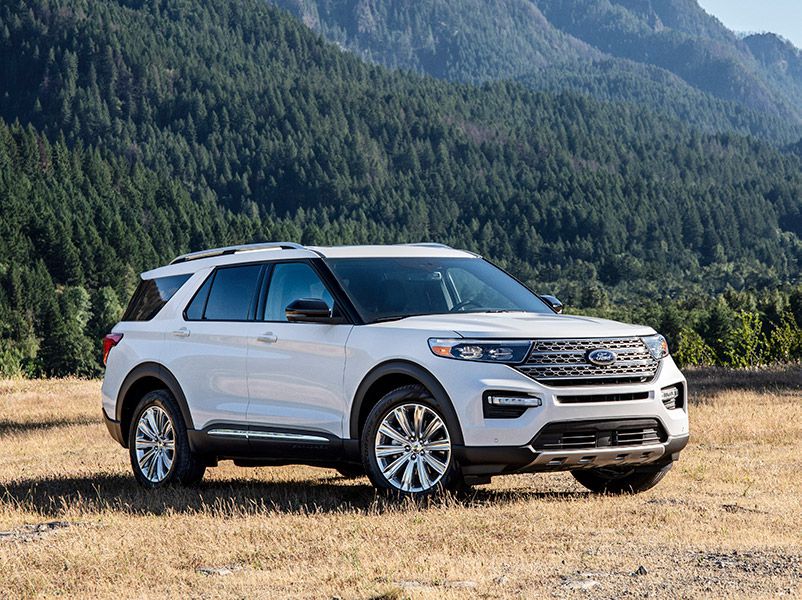
2020 Ford Explorer Limited ・ Photo by Ford
The Ford Explorer has been a leader among mid-size SUVs for decades, but it recently got yet another serious challenger — the Kia Telluride. The Ford Explorer led the way for other mid-size SUVs way back in the late 1980s, and it has had a strong position ever since. Ford has been jealous of its dominant position, and when the vehicle was redone for the 2020 model year, it was switched from a front-drive-oriented platform to a rear-drive-biased architecture. The goal was to increase its important capabilities like towing while maintaining its exterior design advantages. And speaking of exterior design, the new Telluride has become a hit with mid-size customers largely due to its good looks. The Explorer offers far more variations than the Telluride, including hybrid and high-performance models. Both vehicles bring many weapons to the shootout. Here is the comparison of the 2021 Ford Explorer and the 2021 Kia Telluride.
Exterior Design
Heralded by Ford as the “best-selling SUV of all time,” the Explorer has had the reputation of being one of the best-looking vehicles in the segment for years. We think the 2021 version continues in that tradition. The rear-drive architecture gives the Explorer a stance that front-drive-oriented crossovers like the Telluride have difficulty duplicating. Frankly, the front ends of the two vehicles have a lot of similarities, but the Explorer uses horizontal headlights while the Telluride uses vertical ones. The grille openings look a lot alike, right down to the center “ovals” that carry the brand names. The Explorer’s side panels are more sculpted than the Telluride’s, and it has a more dramatic C-pillar. In overall length, the Explorer is almost two inches longer than the Telluride. In overall width, the Ford is 0.6-inches wider. The biggest dimensional difference is in the wheelbase. With its “north-south” engine, the Explorer’s wheelbase is almost five inches longer than the Telluride's, putting its wheels out toward the corners.
: Tie

Photo by Kia
Interior Style
One area of intense competition in the mid-size segment is the interior where we are seeing better designs with richer, more luxurious materials. That is one of the keys to the Telluride’s almost immediate success. It offers good-looking interiors across its trim levels. To compete, the Explorer’s interior is also well-designed, and the mid-level models up the ante with better-quality materials than the base trim. Most recently, Ford has gone farther still; the Explorer has an upscale King Ranch edition, playing off the longtime success of its King Ranch F-150 pickup truck. It boasts a large, vertical infotainment screen and sumptuous upholstery festooned with the famous King Ranch logo. Even the base Explorer has an 8-way power-adjustable driver’s seat, 4-way manual adjustable front passenger seat, 35/30/35 split-fold-flat second-row seats with outboard seat recline, and 50/50 fold-flat third-row seat. In the Kia, the entry-level LX has manually adjustable front seats, 60/40 split-folding second and third-row seats with buttons to activate second-row folding in the cargo area.
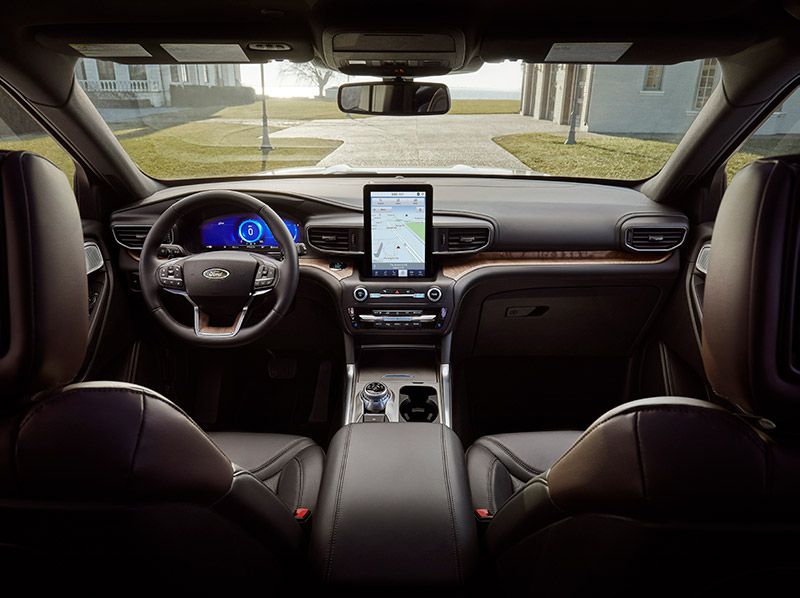
Photo by Ford
Infotainment and Technology
Depending on the trim level, the Telluride is equipped with an 8- or 10.25-inch infotainment display. Android Auto and Apple CarPlay are standard across the board. Wireless phone charging is available on upscale trim levels. If you seek premium audio, a 10-speaker Harmon/Kardon system is standard on the SX trim. During our extensive test drive, we found the Telluride’s infotainment system to be easy to understand, and it functioned as expected. The base Explorer has Ford’s SYNC 3 infotainment system with an 8-inch capacitive touchscreen with swipe and pinch-to-zoom capability. Apple CarPlay and Android Auto compatibility are standard across the lineup as is FordPass Connect that includes Wi-Fi hotspot capability. B&O sound system by Bang & Olufsen with 12 speakers and HD Radio is standard on the Limited and higher trim levels.
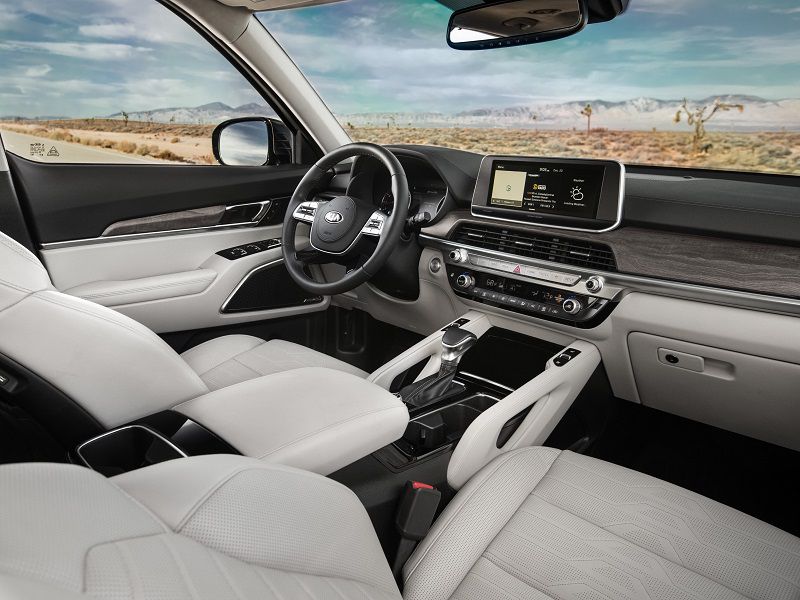
Photo by Kia
Powertrains
The Kia Telluride makes selecting a powertrain simple. All Tellurides are equipped with a 3.8-liter naturally aspirated V6 that delivers 291 horsepower. It drives either the front wheels or all four wheels via an 8-speed automatic transmission. In comparison, the Explorer offers a candy store of powertrain choices. The base, XLT, and Limited trims are powered by a 2.3-liter EcoBoost 4-cylinder engine that produces 300 horsepower. It drives either the rear wheels or all four wheels through a 10-speed automatic transmission. The Explorer's luxurious Platinum edition has a 3.0-liter EcoBoost V6 that offers 365 horsepower mated to a 10-speed automatic. All Platinum models come with four-wheel drive. The Explorer Hybrid, in the Limited trim only, has a 3.3-liter V6 supplemented by an electric motor to produce 318 combined horsepower. The hot-rod Explorer is the ST with a 400-horsepower version of the 3.0-liter EcoBoost V6 and 10-speed automatic. It’s a four-wheel-drive vehicle.
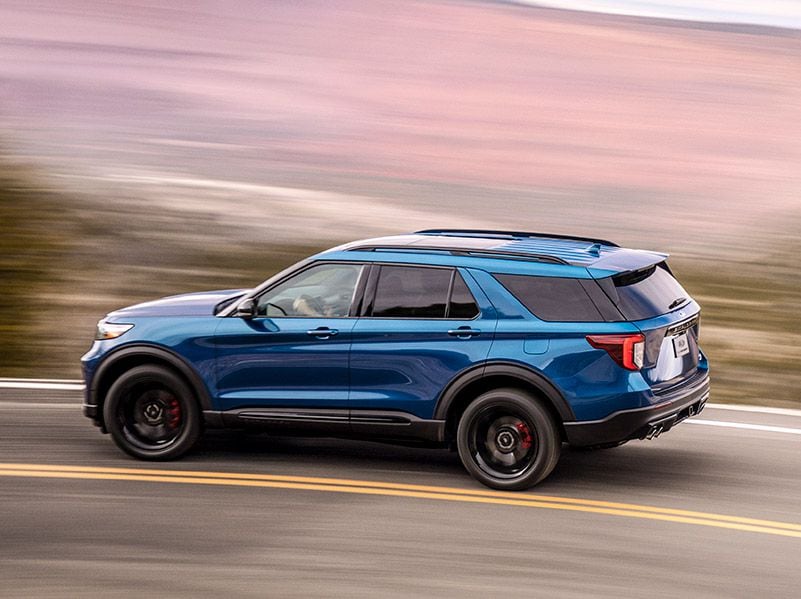
Photo by Ford
Driving Impressions
The Kia Telluride delivers good performance and a comfortable, predictable ride. Handling is on par with other crossovers in the segment, and we think its buyers will be satisfied with what it offers. As you might expect from the varied drivetrains offered in the Explorer, the driving experiences vary — but they vary from very good to excellent. There is no lack of power and torque in the 2.3-liter 4-cylinder models, and the models with the 3.0-liter turbocharged V6s are that much better to drive. Of course, we as professional car testers were particularly pleased with the performance of the 400-horsepower Explorer ST. It is a fun-to-drive, three-row vehicle. Ford's engineers went to special lengths to endow the Explorer Hybrid with the drivability of the other Explorers. While it’s no ST, it is pleasant to drive. It, like several of its Explorer mates, can perform well off-road beyond the capabilities of the Telluride.
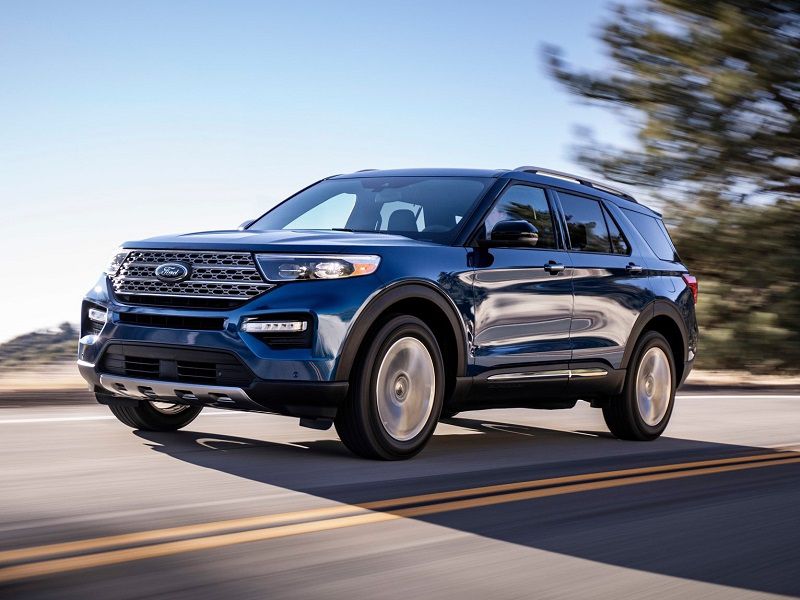
Photo by Ford
Safety and Driver Aids
For the 2021 model year, the Explorer offers Ford’s Co-Pilot360 technology. The standard active safety features include automatic high-beam headlights, blind-spot warning system with cross-traffic alert, lane-keeping alert and assist, pre-collision assist with automatic emergency braking and pedestrian detection, and a rear-view camera. Explorers also have hill start assist, post-collision braking, reverse-sensing, sidewind stabilization, and trailer sway control. Four-wheel-drive Explorers have hill descent control. Adaptive cruise control is available on many trims.
The Kia Telluride features a comprehensive standard safety package called Drive Wise. Among the electronic driver and safety aids it includes are pre-collision system with pedestrian and cyclist detection, lane departure alert with steering assist, rear cross-traffic collision avoidance assist, and adaptive cruise control with stop and go.
: Kia Telluride
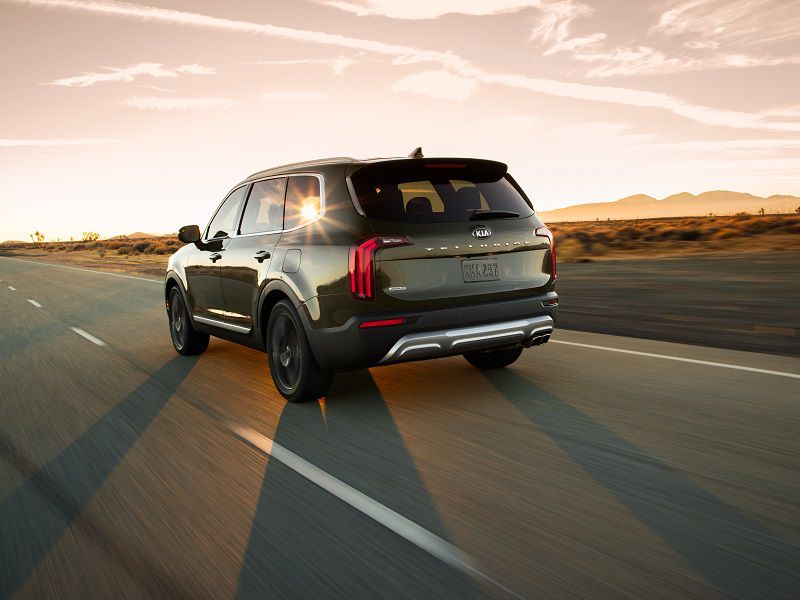
Photo by Kia
Interior Space and Cargo
Among the three-row SUVs, the Kia Telluride and Ford Explorer offer very similar amounts of passenger space, both right around a roomy 155 cubic feet. With the rear rows of seats up for use, the Telluride has 21.0 cubic feet of cargo space. That compares to 18.2 cubic feet in the Ford Explorer. With the third-row seatbacks folded, the Telluride offers 46.0 cubic feet of cargo area, and the Explorer offers 47.9 cubic feet. With all the rear rows folded, both vehicles offer virtually the same cargo area — about 87 cubic feet. Both vehicles offer powered hands-free liftgates too. Explorers equipped with the 3.0-liter EcoBoost V-6 can tow up to 5,600 pounds, while 2.3-liter EcoBoost-powered Explorers can tow up to 5,300 pounds. The Kia Telluride has a maximum tow rating of 5,000 pounds in both front-drive and all-wheel-drive configurations.
: Ford Explorer
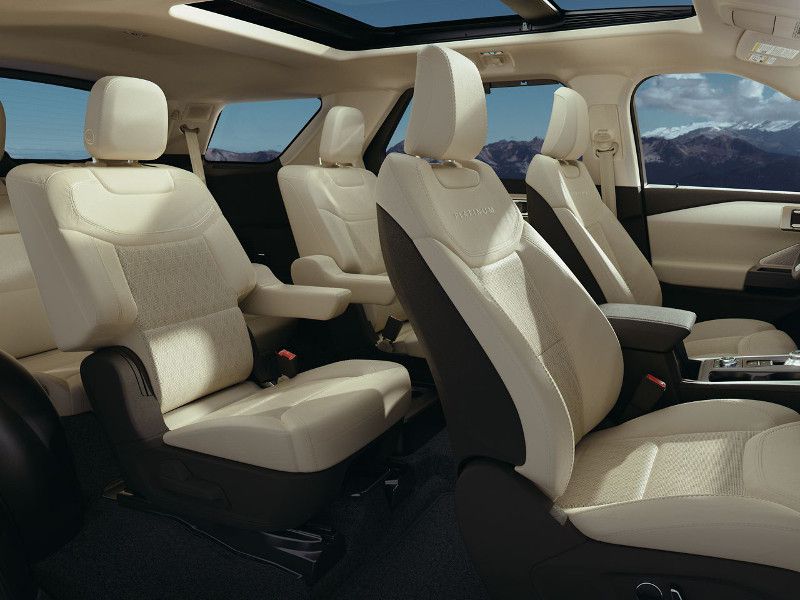
Photo by Ford
Trim Levels
Both the Ford Explorer and Kia Telluride offer a variety of trims and options that allow buyers to outfit their vehicles the way they want them. The Telluride vehicle lineup has four trims – LX, EX, S, and SX. Front-drive and all-wheel-drive versions are available on all trims. For 2021, the Nightfall Edition is Kia’s version of the popular blacked-out treatment. It is available in eight exterior colors. The Explorer has six different trim configurations – base, XLT, Limited, ST, Platinum, and King Ranch. The Hybrid is a Limited trim vehicle. The Explorer’s answer to the Telluride Nightfall Edition is the XLT Sport Appearance Package featuring 20-inch “carbonized gray”-painted 10-spoke wheels and additional dark-gray trim. Rear-drive and “intelligent” 4-wheel drive are offered on base, XLT, Limited, King Ranch, and Limited Hybrid trims. The ST and Platinum trims only come with four-wheel drive.
: Ford Explorer
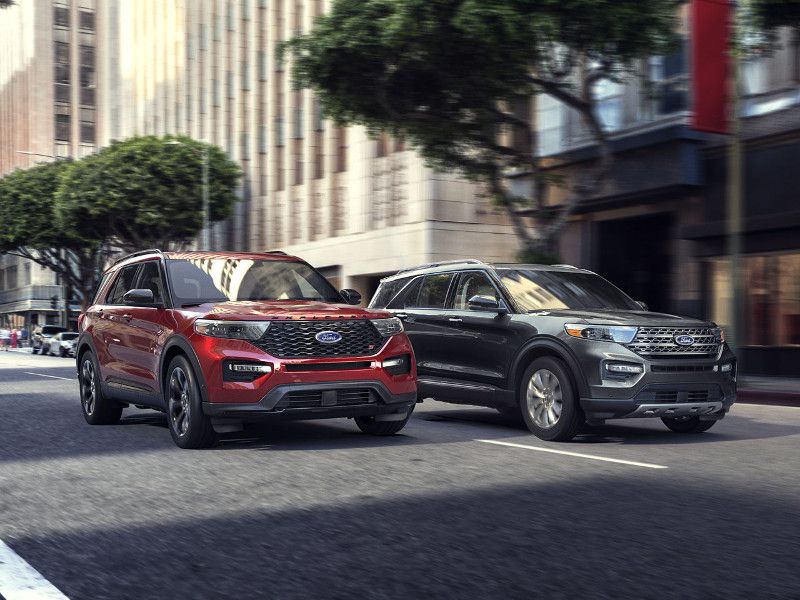
Photo by Ford
Pricing and Value
The 2021 Ford Explorer lineup has more variation than the Kia Telluride, but the pricing among these two mid-size SUVs' trims is very similar. The Telluride’s starting price is about $500 lower than the Explorer, but both are in the $33,000 to $34,000 range. A mid-level Ford Explorer XLT with four-wheel drive has a suggested list price of $38,070 including a $1,245 destination charge, while the mid-level Telluride S has a list price of $37,815, including a $1,225 destination charge. The luxurious King Ranch 4x4 has an MSRP of $55,595. The most luxurious Telluride, the SX trim, has a starting MSRP of $45,615. The performance-oriented Ford Explorer ST with its 400-horsepower turbocharged V6 has a suggested retail of $49,995. Both vehicles offer excellent value, but the Explorer gives buyers options the Telluride doesn’t.
: Ford Explorer
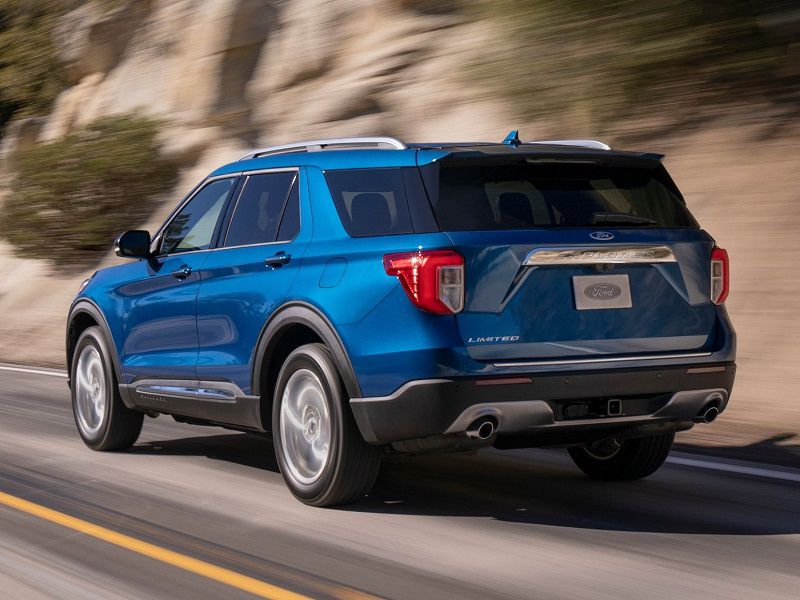
Photo by Ford
And the Winner Is…
In determining a winner in this very close comparison, the Ford Explorer has history and volume on its side. It’s been a known best-seller for decades, and we applaud its return to a rear-drive platform. Among other things, that makes it a more secure tow vehicle. Because of volume, the Explorer offers a more varied lineup, including performance and hybrid models the Telluride lacks. That said, the Kia Telluride is a formidable opponent for the Explorer with great looks, a nice interior, excellent people-packaging, and a strong quality story. For the everyday uses of the typical three-row SUV, the Telluride is right on the money, but the Explorer can do just as well. The Explorer is the superior off-road vehicle. In a very close contest, the winner is — the 2021 Ford Explorer.
: Ford Explorer

Photo by Ford